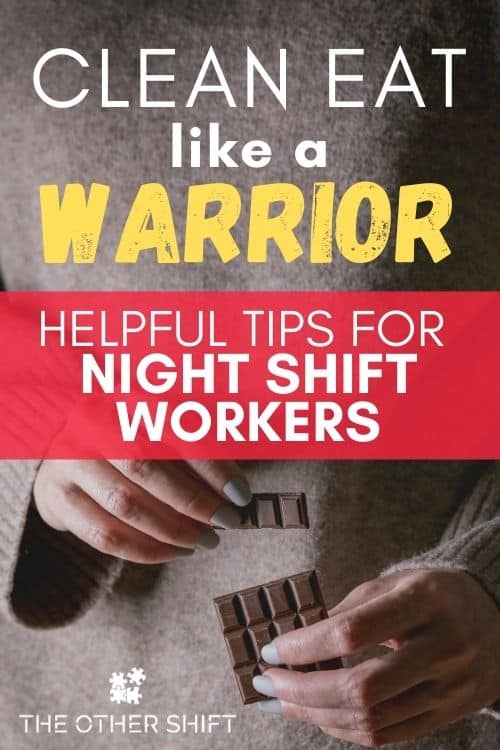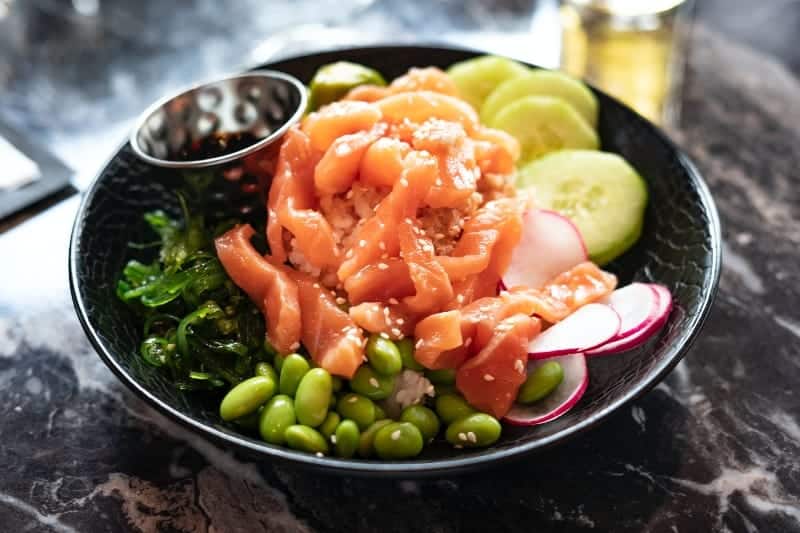Disclosure: This page may contain affiliate links, meaning we receive a commission if you decide to make a purchase through our links, but this is at no additional cost to you. Please read our disclosure and privacy statement for more info.
When working the night shift, health and wellness often take a backseat over getting through the shift in one piece. We sacrifice ourselves for the job, often helping others before taking our own well-being into consideration. Having a proper diet plan, and sticking with it, can do wonders for your body; enter in the Warrior Diet.
The Warrior Diet includes a 20 hour fasting window, with 4 hours of feasting. You can consume small amounts of dairy, eggs, raw vegetables or fruits in the fasting window, though calories must be limited. Our suggested eating window for night workers is 5pm-9pm.

Developed by Israeli Special Forces operator Ori Hofmekler, the Warrior Diet is a take on the concept of intermittent fasting, where you fast for an extended period of time and then feast for a small window. When following the Warrior Diet, you fast for 20 hours and feast for 4. (source)
Though not complex, understanding and sticking to the Warrior Diet will take some effort. In this article, we are going to break down the Warrior Diet to see what it is, how effective it is when compared to other diets, and if it is a diet plan night shift workers should follow. Follow along as we put our health at the top of our priority list.
What is the Warrior Diet?
In many of today’s modern cultures, we eat three large meals a day while snacking periodically to get us from one meal to the next. In ancient times, this wasn’t the case. In fact, often times our ancestors were happy to get one meal a day.
(The tradition of three meals a day comes from European settlers who viewed Native Americans as savages for eating only when they were hungry. These settlers viewed timing meals as being civilized.)
Fast forward to today and the new popular dieting trend is intermittent fasting, where you have a set period of time you don’t eat or drink any calories followed by a time you can eat and drink what you want, within reason; the Warrior Diet is an alternate version of intermittent fasting.
We’ve talked all about intermittent fasting here if you’ve like to learn about this “diet” first.
Its name actually comes from the eating habits of warriors before and after battle. Prior to battle, warriors would only consume a minimal amount of food along with large amounts of water. Then, when they returned from battle, they would feast during the evening before going to bed.
This makes the warrior plan completely different than many of the weight loss fads hitting the market. It’s not as much of a weight loss plan as it is a change in lifestyle which leads to weight loss. When you look at it from this perspective it’s easy to see why so many are having success with it.

The Warrior Diet Plan
The Warrior diet is different from other forms of intermittent fasting, such as OMAD (one meal a day) in that you are allowed to consume a very small amount of food during the “fasting” period. It follows a 20:4 plan, meaning during the 20 hours, you eat as little as possible. The foods allowed during this time are:
- Dairy
- Eggs
- Raw vegetables
- Fruits
Along with these, you are able to drink black coffee, tea and as much water as you want. The idea is to take in as few calories as possible during this first time slot.
Followed by this 20-hour period is 4 hours of feasting time, known as an eating window. During this time, you can essentially eat anything you want. However, the diet plan does work better if you stick to healthy, unprocessed foods while still getting plenty of water. And when it says you can eat anything you want, it means it.
There’s no need to count calories or check nutrition labels if you don’t want / have to when following the Warrior Diet Plan; the key, though, is to do so in moderation.
If you consume several thousand calories in this 4 hour period, it will actually harm you rather than help you.
Some foods which are excellent to eat during your 4-hour feasting window are:
- Quinoa
- Rice
- Cheese
- Yogurt
- Lean Meat, such as chicken, steak, fish, and turkey.
- Mixed nuts
- Raw and full-fat dairy food
One of the major components you should consider if following the Warrior Diet is the importance of protein, and lots of it. Protein helps to not only build muscle but to help you feel full for longer periods of times. Hofmekler promotes raw and full-fat dairy products such as cheese and yogurt, but this protein can come from any source.
Related post: Shift Work Nutrition Advice Most Are Afraid to Talk About
One other portion of the Warrior Plan many tend to not follow is an increase in activity level. Let’s go back to where its name comes from. Warriors would exert enormous amounts of energy in battles which lasted most of the day, if not several days in a row. This aided in allowing them to eat copious amounts of food during their feasting window.
Put that into our times, The Warrior Plan is designed to coincide with an uptick in activity.
Now, most of our night shift jobs keep us active as it is. However, they often aren’t for prolonged periods of time, meaning we seldom exert ourselves for an entire hour with no break. If we add in some time at the gym before or after our shift, we might find not only is it easier to stick to the Warrior Diet Plan, but more success will come as well.
Related post; Sleep or Workout? What Should I Do After Night Shift?
[VIDEO] – If you need some exercise motivation, this video will provide you with just what you need!
Is the Warrior Diet More Effective Than Similar Diet Plans?
There aren’t any studies currently which look at the effectiveness of the Warrior Plan specifically. However, intermittent fasting has been studied extensively and has been proven to be a safe, effective method to weight loss. Still, though, the question remains on whether The Warrior Diet plan is more effective than other intermittent fasting or weight loss plans. The short answer to that is, it can be.
The effectiveness of any weight loss plan is going to depend greatly on the person following the plan; the Warrior Diet Plan is no different.
The Warrior Plan is a less strict version of intermittent fasting in that it allows you to consume small amounts of calories during the 20-hour window, though it’s stricter than most in terms of the longer fasting window.
This requires an extreme amount of self-control not to over snack during this fasting window, which would not allow your body to enter into its strongest fat burning mode called ketosis.
That being said, allowing for the eating of a small amount makes it easier to stick with, as the number one complaint as to why someone gives up on intermittent fasting is the perpetual feeling of being hungry.
Keep in mind, though, the feeling of being hungry during The Warrior Diet, or any other intermittent fasting plan, is more mental than physical; it requires retraining your body’s eating cycle, which can take 3 weeks or more.

Night Shift Work and the Warrior Diet
Now that we’ve addressed the Warrior Diet and given a bird’s eye view of how it works, let’s examine what this means for a night shift worker because, let’s face it, our days can be a little messed up. We eat our “breakfast” often when others are eating dinner, with our “lunch” being in the middle of the night. Following a plan such as The Warrior Diet can be difficult, but not impossible.
Finding the right balance for an intermittent fasting diet while on the night shift is key to being successful. Fasting during breakfast and lunch followed by eating a normal dinner doesn’t quite cut it for us night shift workers. That being said, let’s look at how the Warrior Diet could fit into night shift hours.
A large number of night shifts start between 7 and 9 pm, depending on the duration of the shift.
Following the Warrior Diet, your feeding window could start at 5 pm and end at 9pm. This allows you to eat a full meal before your shift starts, wait a couple of hours, and possibly have a larger snack before your feasting window closes. By the time your shift gets busy, you won’t even realize you’re in your fasting period and when your shift ends the next morning, you could have already fasted for 9-10 hours.
Once you wake up your fasting window is nearly done, and you are able to eat your full meal before your next shift. Let’s look at some positives to following the Warrior Diet on the night shift:
Extreme Weight loss
One of the biggest reasons night shift workers struggle to lose weight, and even gain in most cases, is due to the incessant need to snack. The Warrior Diet limits this, and totally removes it if followed to a point, which leads to the body burning fat at a higher rate.
Increased Energy
This won’t be felt right away. In fact, you may not feel this benefit until after the first 3 weeks or so. However, if you stick to the plan, you will likely see your energy level is raised drastically without any outside help, such as energy drinks and other caffeine sources.
Relate post: Night Shift Fatigue. How to Stop Feeling Constantly Tired
Improved Concentration and Health
Intermittent fasting itself reduces inflammation, which helps your brain receive more of the blood and nutrients it needs to perform at its peak efficiency.
Improved Overall Health
Night shift workers generally are not known for their good health practices. The Warrior Diet, however, can help to reduce blood sugar, blood pressure and have an overall benefit to the health of your body. This is due to both the fasting itself and eating healthier foods.
Read more about night shift and your immune system; How Can I Boost My Immune System When Working Night Shift?

Potential Risks for Night Shift Workers and the Warrior Diet
As with any diet plan, there are potential risks with the Warrior Diet plan. These risks could be higher in night shift workers if the diet isn’t followed properly.
In this section, we are going to examine any possible risks to help you determine if the Warrior Diet Plan is right for you.
Malnutrition
One downfall to any form of intermittent fasting, including the Warrior Plan, is not getting enough essential nutrients that your body needs to function.
It’s for this reason many who follow these plans take additional vitamins and supplements. These vitamins also help during the first days and weeks of starting the Warrior Diet to avoid your body having adverse reactions to the lack of nutrients it needs as it adjusts to your new eating habits.
Dehydration
When you first start the Warrior Diet, your body is going to release excessive amounts of water and salt. Dehydration is caused when we don’t replace the fluids and, more importantly, electrolytes. That’s why it is important to ensure you are drinking plenty of water through your shift and especially during your fasting window.
If you notice your urine turn to a dark color, up your water intake.
Feeling thirsty? This post will provide some refreshing options.
Fatigue
When you first start on the Warrior Diet, your body detoxes, which is one of the added benefits of intermittent fasting.
This detox, however, brings with it fatigue. Plus, your body is accustomed to running off three or more meals a day, so it has to adjust to the lower energy consumption. If you press through, the fatigue will turn into added energy.
However, fatigue on the night shift can be dangerous, so it might be wise to start when you have consecutive days off.
Mood Changes
While this may not necessarily be a risk to you, it may be for your coworkers.
Even when you are hungry on a normal eating schedule it’s possible to get “hangry.” This tends to be increased during the early stages of intermittent fasting.
The Warrior Diet is good to combat this as it does allow for a tiny amount of calories, but still be aware of how this will change your work dynamic for the initial start period. And always remember to play nice!
Lightheadedness
This is another side effect which often occurs only during the initial starting period of the Warrior Diet, but one that could affect you more when working the night shift.
This lightheadedness, and the headaches often associated with it, are most often caused by your body going into caffeine withdrawal. Drinking large amounts of water at a time can help to lower the pain of the headaches and avoid prolonged lightheadedness during your fasting period.
While not long-lasting, these side effects often interrupt our work life, making it hard to stick to such a plan. However, if you are able to stick to it, and adjust your eating schedule to fit your work times, you can lower the affects these have.
[VIDEO] – Headaches on night shift? Get relief now. This video Em did is great.
Is the Warrior Diet Recommended for Night Shift Workers?
There are some amazing weight loss benefits within the Warrior Diet, but it’s more than just the newest weight loss fad; the Warrior Diet is a change in your lifestyle.
Every fiber of your life has to change to make the Warrior Diet successful. Not everyone can do that. That being said, if you’re looking for a way not only to lose the weight but to become healthier while doing to, the Warrior Diet might just be for you.
As always, never start a plan like this without first consulting your doctor or medical professional. If you are pregnant, have diabetes or other health issues, or have a history of eating disorders, this may not be the plan for you.
But if you do try it, stick with it for a few weeks before writing it off as a failure. With the right amount of healthy foods during your eating window and plenty of water, you will see the pounds fall off in no time and see your energy level skyrocket too.
Keeping reading; The Advanced Guide to Self-Care and Night Shift
Enjoy!

Disclosure: This page may contain affiliate links, meaning we receive a commission if you decide to make a purchase through our links, but this is at no additional cost to you. Please read our disclosure and privacy statement for more info.
Recent Posts
An examination of the night shift professions, that while sometimes underappreciated, are necessary for civilization, in its current form, to exist. A city can be thought of as a machine. Each...
Culminated from an exhaustive yet well-funded journey into the night, this article will prepare you for life outside of work while being a denizen of the dark. During days off, night shift...

